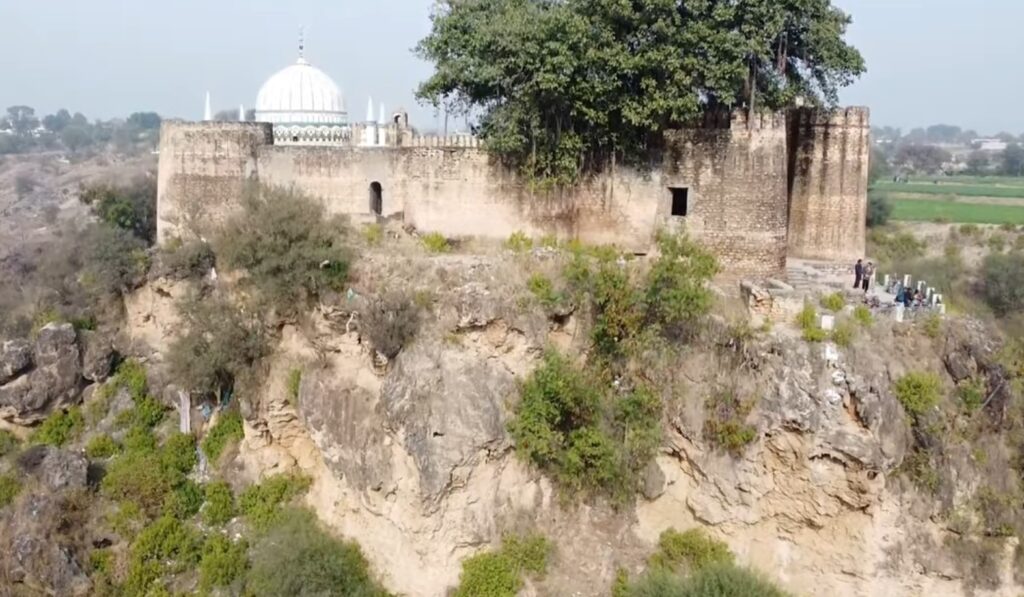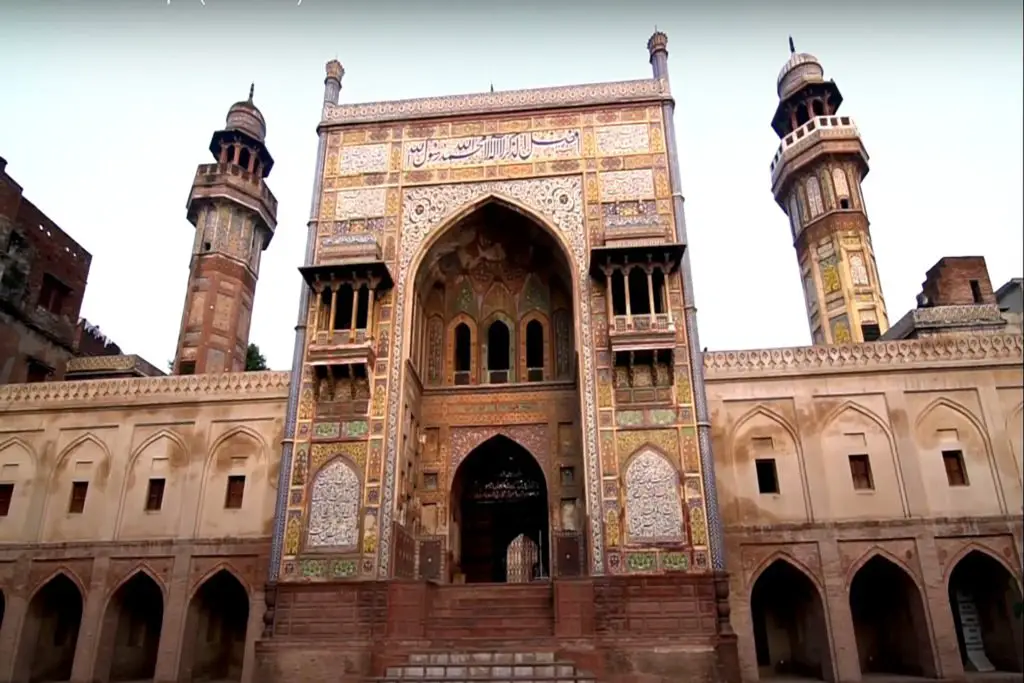Sangni Fort is a historical structure situated about 25 kilometers west of Gujar Khan, Pakistan. It is believed to have been built by the Mughals and was later occupied by the Dogras of Kashmir and the Sikhs. The fort served as a prison in the past, and it is one of the many forts and fortresses in the Potohar region, including Rohtas, Attock, Pharwala, Rawat, and Giri.
However, Sangni Fort is the most spectacular of them all, perched on a hill that provides a panoramic view of the surrounding villages, including Sui Cheemian, Dhok Las, and others.
Location of Sangni Fort
Sangni Fort, also known as Sangani Killa, is a historic fort located near the village of Takal in Kallar Syedan Tehsil, Rawalpindi District, Punjab, Pakistan. The fort’s location near the border of Punjab and Kashmir made it an important strategic site, and it was used to control the local population and collect taxes from nearby villages.
Despite its military significance, the fort eventually fell into disuse and was largely forgotten by the surrounding community. However, the arrival of a local shrine to Sahibzada Abdul Hakeem changed the fort’s fortunes, and it became an important pilgrimage site for Muslims in the area.
Over time, the fort lost its importance and became obscure. However, the keepers of a nearby shrine moved the shrine to the fort, and it has remained a significant site ever since. Today, the fort is in good condition, with intact walls, but the inside has been altered and decorated due to the presence of the shrine of Sahibzada Abdul Hakeem.
Visitors to Sangni Fort can explore its fascinating history and architecture, as well as the spiritual significance of the shrine. The fort’s location, perched on a hill overlooking the surrounding countryside, provides stunning views and a sense of the strategic importance of the site.
Sangni Fort is a must-visit for anyone interested in the rich history and culture of the Punjab region. Its unique blend of military and spiritual significance makes it a one-of-a-kind destination that is sure to leave a lasting impression.










Sangni Fort Architecture
The fort has four bastions of almost equal diameter with stairways that lead to the top, used for guarding the fort and its surrounding area. The main entrance gate opens to the east, with steps leading inside the fort. The structure overlooks two rivulets, providing a picturesque view of the area.
Shrine of Sahibzada Abdul Hakeem in Sangni
Inside the fort, there is a shrine dedicated to Abdul Hakeem, a famous preacher who is believed to have come from Arabia via Iran to preach in the region. Abdul Hakeem was not allowed to preach in Sangni by Dogra soldiers during the Dogra rule.
As a result, he stayed at the Chakrali Village, where he gained many disciples. Chakrali became his permanent seat of preaching, and his name spread throughout the Potohar region until his death in Chakrali, where he was buried.
The shrine of Abdul Hakeem is constructed of marble, and the hemispherical dome rests on a square building, with four minarets at the corners. The drum on which the dome rests is adorned with glazed tiles, and the interior is decorated with glasswork. The walls of the corridor are decorated with modern ceramics, which is a common feature of modern tomb architecture in the Potohar region.
The shrine attracts hundreds of people every Thursday and Friday, with newly married couples visiting to seek blessings from the saint. Devotees also slaughter animals at the shrine in the hope of fulfilling their wishes and as a form of thanksgiving to the saint. The shrine is located close to a mosque built by Abdul Hakeem’s disciples.
Today, Sangni Fort is a popular tourist destination, attracting visitors from around the world who come to explore its rich history and soak up its unique atmosphere. The fort’s architecture is a fascinating blend of Sikh and Mughal styles, with ornate carvings and intricate details that speak to the craftsmanship of its builders.
Visitors to the fort can explore its various rooms and corridors, including the shrine of Sahibzada Abdul Hakeem, which is considered to be a sacred site by many in the local community. The fort’s location on a hilltop provides stunning views of the surrounding countryside, and there are plenty of opportunities for hiking and exploring in the area.
Overall, Sangni Fort is a must-see destination for anyone interested in the history and culture of the Punjab region. Its unique blend of military and spiritual significance, coupled with its stunning architecture and beautiful setting, make it a truly special place to visit.







